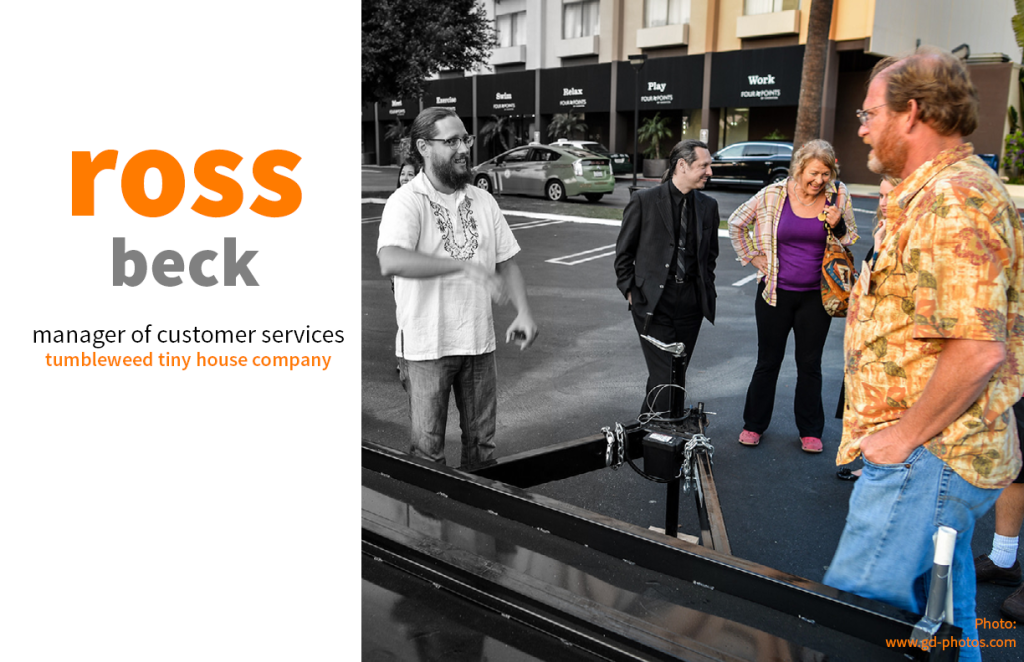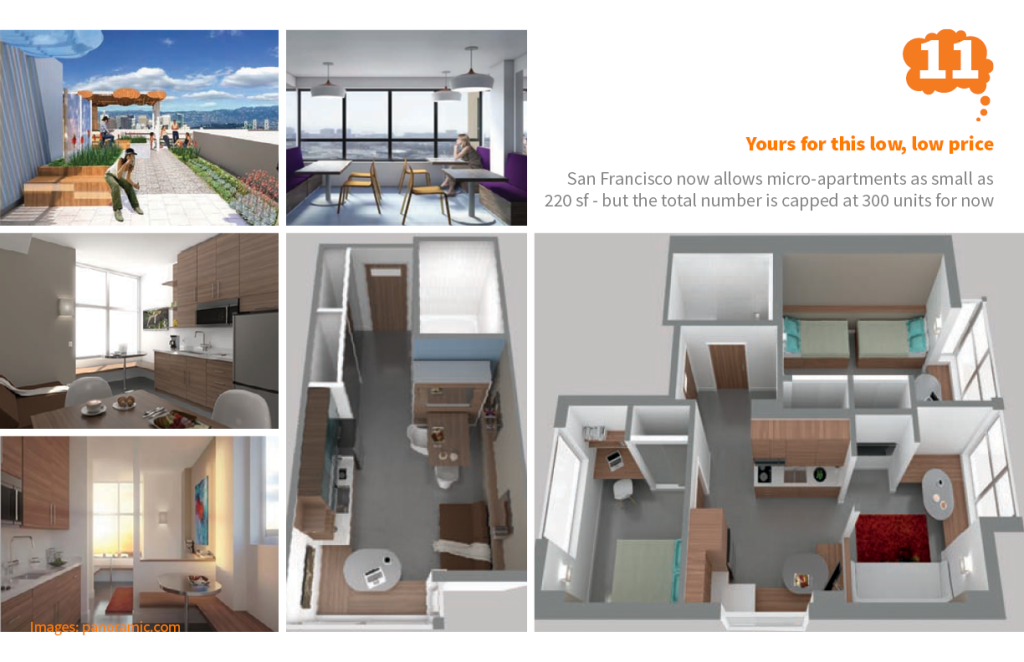This is Part 4 of a series based on my lecture last week at the Tulane School of Architecture. You can catch up with Part 1, Part 2, and Part 3 here.
Our journey continues in California, as we head through the redwoods and along Highway 1 for the final part of this trip.

California could be considered the home of the modern tiny house movement, and it’s home to perhaps the best-known proponent of tiny houses: Tumbleweed Tiny House Company. Tumbleweed was founded by a man named Jay Shafer, a very charismatic advocate for tiny houses who has since moved on to start a new company called Four Lights Tiny House Company (where they’re looking at developing a tiny house community, among other things). While I didn’t get a chance to talk with Jay, I did visit Tumbleweed, where I met Ross Beck, their Manager of Customer Services.

Tumbleweed has grown into a company with a handful of employees and a small office in Sonoma, CA. Their strategy for tiny houses has been to move towards the mainstream and make tiny houses officially respectable. Rather than living in the legal limbo between a house and a mobile home, Tumbleweed now builds tiny houses that are Recreational Vehicle (RV) Certified. This means that buyers now have access to standard RV financing and insurance, which overcomes problems faced by many “Do-It-Yourself” tiny house builders.

Above are a couple photos of partially completed Tumbleweed houses. Until about a year ago, Tumbleweed mainly sold tiny house plans from which people could build their own houses. Now, they have a manufacturing facility and showroom in Colorado Springs, CO, where they build tiny houses that sell for about $60-66,000. (They also sell an unfinished shell version, which they call the Amish Barn Raiser, for a lesser price).

In addition to the sale of houses and house plans, Tumbleweed’s third business involves holding workshops for people interested in tiny houses. Ross described three broad categories of people who attend these workshops. First, there are young people — college students or recent graduates — who are reluctant to take on the additional debt that comes with buying a house and doubtful about the future of safety nets like Social Security. Second, there are older people who are retired or planning for retirement and looking for a way to live within their means. And third, there are middle-aged people who are concerned about being able to pay off their mortgages as well as possibly needing to support elderly parents or other family members.

The last stop on my trip was San Francisco, where I looked at a third kind of tiny space — micro-apartments. My contact at the City was Kimia Haddadan, a planner for the City of San Francisco. (Unfortunately, I forgot to ask if I could take her picture for this presentation). I began by asking whether micro-apartments might be part of a solution to the extremely high cost of housing in San Francisco. Kimia told me that the market is so hot that even micro-apartments are not really affordable. These projects are often billed as “Affordable by Design” — affordable, in other words, because they’re so small — but tiny apartments in San Francisco still rent for $2,000 or more a month. Kimia told me that while Mayor Ed Lee is, in fact, pushing for an increase in the city’s housing stock, micro-apartments are not in themselves an affordable housing solution. In fact, she was more optimistic about the potential for accessory dwelling units of the kind that Seattle, Portland, and other West Coast cities already allow. When I visited, San Francisco had just passed measures legalizing certain existing units and establishing a pilot program for new attached accessory dwelling units.

Finally, I met with Patrick Kennedy and the staff of Panoramic Interests, a Berkeley-based development company currently building two micro-apartment projects in downtown San Francisco. Panoramic has been quite successful in Berkeley, having built about 5,000 units in a city that is traditionally resistant to development. Their micro-apartment projects were permitted under a new law, supported by Supervisor Scott Wiener, that reduced the minimum unit size from 290 to 220 sf. (The total number of these units is capped at 375 until the impact of the initial developments can be studied.)

I visited one of these projects, The Panoramic, which is currently under construction and will contain micro-studios in the 260-275 square foot range as well as slightly larger micro-suites. The developers couldn’t offer an exact figure for the rent of each unit, but I was told that the California College of the Arts will be leasing several floors of the building at $1,600 per studio and $3,100 per suite — hardly cheap, but perhaps better than the alternatives. Patrick told me that he tries to build car-free projects, for multiple reasons: in addition to the urban and environmental benefits, a car-free building can make better use of the ground floor and is more profitable overall. The Panoramic, for example, has just a single parking space, leaving the rest of the ground floor free for other uses.

Above are a few images from the marketing materials for The Panoramic. The project’s estimated completion date is June 2015. According to Patrick, San Francisco city officials and developers are waiting to see how successful the project is. Once it’s complete, the 375-unit cap for micro-apartments might be reassessed.

In conclusion, this trip revealed a wide range of projects under the label “Living Small.” Tiny living is certainly not for everyone, but it appeals to many people nonetheless. It can be urban, suburban or rural, self-made or commercially built, legal, semi-legal or illegal. If there’s a common thread, it’s simply the idea of making do with less — reducing debt, reducing clutter, and reducing one’s environmental footprint. And what emerges is a joy found in simple, small spaces.









